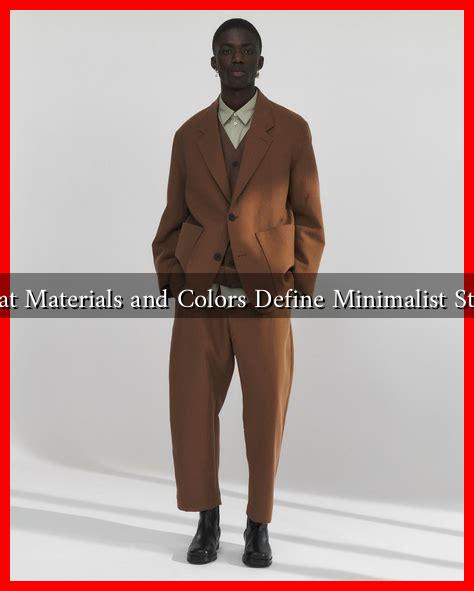-
Table of Contents
What Materials and Colors Define Minimalist Style?
Minimalism is more than just a design trend; it is a lifestyle choice that emphasizes simplicity, functionality, and the beauty of essential elements. Originating in the mid-20th century, minimalist design has evolved into a popular aesthetic in architecture, interior design, and even fashion. This article explores the materials and colors that define minimalist style, providing insights into how they contribute to creating serene and uncluttered spaces.
The Essence of Minimalist Materials
In minimalist design, the choice of materials plays a crucial role in achieving a clean and sophisticated look. The focus is on quality over quantity, with an emphasis on natural and sustainable materials. Here are some key materials that define minimalist style:
- Wood: Natural wood, especially in light tones like birch or maple, adds warmth and texture to minimalist spaces. It is often used in furniture and flooring to create a sense of connection with nature.
- Concrete: This industrial material is favored for its raw, unfinished look. Concrete is often used in walls, floors, and countertops, providing a stark contrast to softer materials.
- Glass: Transparent and reflective, glass enhances the feeling of openness in a space. Large windows and glass partitions are common in minimalist architecture, allowing natural light to flood in.
- Metal: Stainless steel and aluminum are popular choices for fixtures and furniture. Their sleek, modern appearance complements the minimalist ethos of simplicity and functionality.
- Textiles: Natural fabrics like cotton, linen, and wool are preferred for upholstery and soft furnishings. These materials add comfort without overwhelming the visual space.
Color Palette: The Power of Neutrals
The color palette in minimalist design is typically subdued, focusing on neutral tones that promote tranquility and clarity. Here are some colors that are commonly associated with minimalist style:
- Whites: Crisp white walls create a blank canvas that enhances light and space. White is often used to make rooms feel larger and more open.
- Grays: Soft grays provide a sophisticated backdrop that pairs well with other colors. They can add depth without being overpowering.
- Beiges and Taupes: These warm neutrals add a touch of coziness while maintaining a clean aesthetic. They work well in combination with natural wood tones.
- Blacks: Used sparingly, black can create striking contrasts and add drama to minimalist spaces. It is often found in furniture or accent pieces.
- Pops of Color: While the base palette is neutral, minimalist design sometimes incorporates bold colors as accents. This can be achieved through artwork, decorative items, or plants.
Case Studies: Minimalist Design in Action
To illustrate the principles of minimalist materials and colors, let’s look at a few notable examples:
- The Barcelona Pavilion: Designed by Mies van der Rohe, this iconic structure showcases the use of concrete, glass, and steel. Its open layout and neutral color palette exemplify minimalist architecture.
- Muji: This Japanese retailer embodies minimalist design in its product offerings, which feature simple lines, natural materials, and a muted color palette. Muji’s approach emphasizes functionality and sustainability.
- Apple Stores: The sleek design of Apple Stores utilizes glass and metal to create an inviting yet minimalist shopping experience. The use of white and gray tones enhances the brand’s modern aesthetic.
Statistics and Trends in Minimalist Design
According to a survey by the American Institute of Architects, 62% of homeowners expressed a preference for open floor plans, a hallmark of minimalist design. Additionally, a report from the National Association of Home Builders indicates that 55% of homebuyers prioritize energy-efficient materials, aligning with the minimalist focus on sustainability.
Conclusion: Embracing Minimalism
Minimalist style is defined by its thoughtful selection of materials and colors that promote simplicity and functionality. By focusing on natural materials like wood, concrete, and glass, and utilizing a neutral color palette, minimalist design creates serene environments that foster clarity and peace. As more people seek to declutter their lives, the principles of minimalism continue to resonate, making it a timeless choice in design.
For those interested in exploring minimalist design further, resources such as Architectural Digest offer valuable insights and inspiration.


